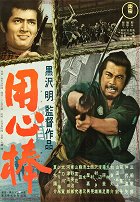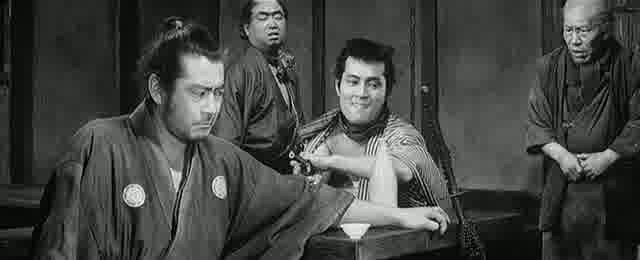Rendező:
黒澤明Operatőr:
Kazuo MiyagawaZeneszerző:
Masaru SatōSzereplők:
Toshirō Mifune, Tatsuya Nakadai, Yōko Tsukasa, Isuzu Yamada, Daisuke Katō, Takashi Shimura, Hiroshi Tachikawa, Eijirō Tōno, Kamatari Fujiwara (több)Tartalmak(1)
A 17. században egy gazdátlan szamuráj elvetődik egy településre, amelynek lakóit állandó rettegésben tartja a selyemkereskedő és a szakékereskedő zsoldosainak háborúsága. Sanjuro, aki hol az egyik, hol a másik fél mellé áll, valójában igyekszik kívül maradni a harcon. Mivel ez nem sikerülhet, kénytelen ravaszul mindkét tábor ellen harcba szállva biztosítani a lakóknak a békét. Kuroszava a kalandfilmekre, sőt a westernre emlékeztetően fordulatos cselekményben és mozgalmas csataképekben jeleníti meg „békeharcos” mondandóját. Nem csoda, hogy ez lett a legnagyobb kasszasikere. (Örökmozgó)
(több)Recenziók (1)
Kurosawa may have made better and more eloquent films with bigger ideas, but this narratively unique three-way war on the streets of a decaying town remains a major cinematic legend. Not only does it mark the first appearance of the great storyline that Sergio Leone and Walter Hill would later elaborate on in their famous films, but most importantly, we witness an immensely appealing cold-bloodedness on the part of Mifune's refined samurai, who from the start makes no secret of his intention to rid himself of all verbiage once and for all, or from the position of the screenwriter and narrator Kurosawa, who spares no deaths and has his title character beaten almost beyond recognition without blinking an eye. All this at a tremendous pace and supported by logical twists and turns that successfully escalate the tense atmosphere until the expected and for my taste too frantic finale. Had Kurosawa allowed himself a little more time to do everything, as he did in his two best films, the spectacle would certainly have been a little more complex and emotionally expressive – still more than a solid 80%.
()

